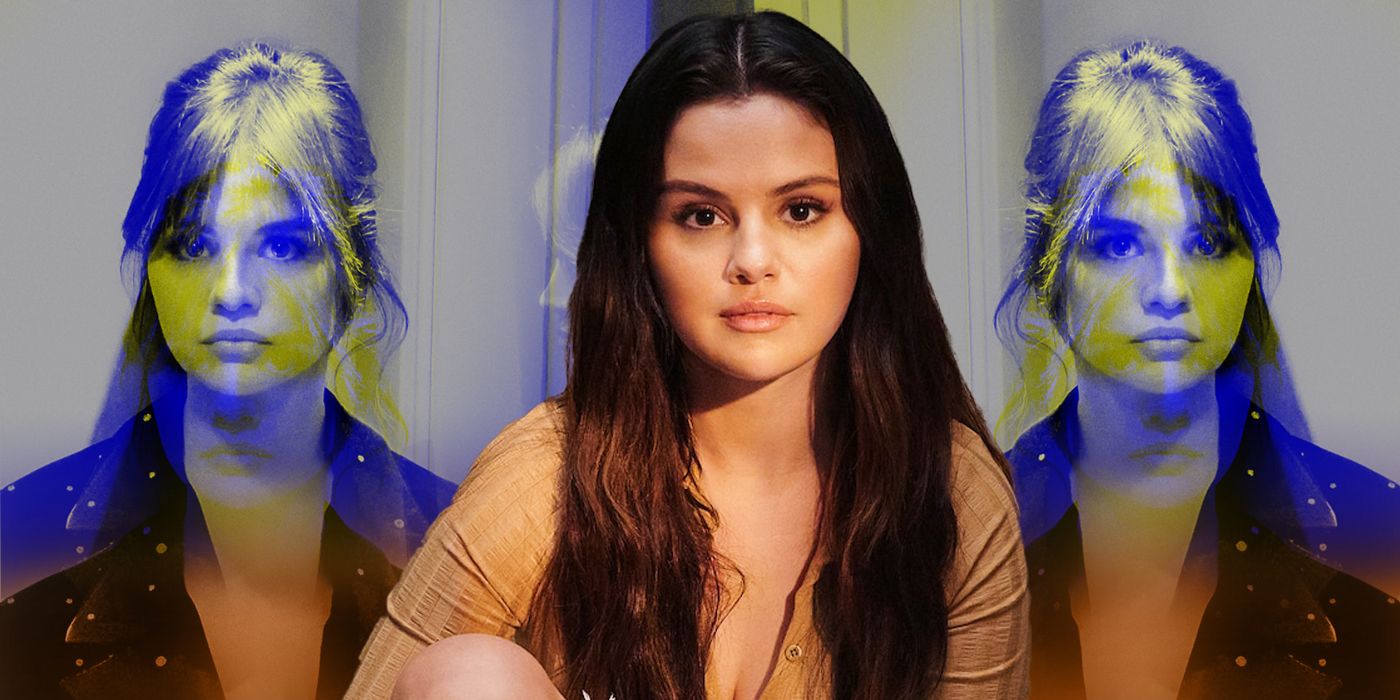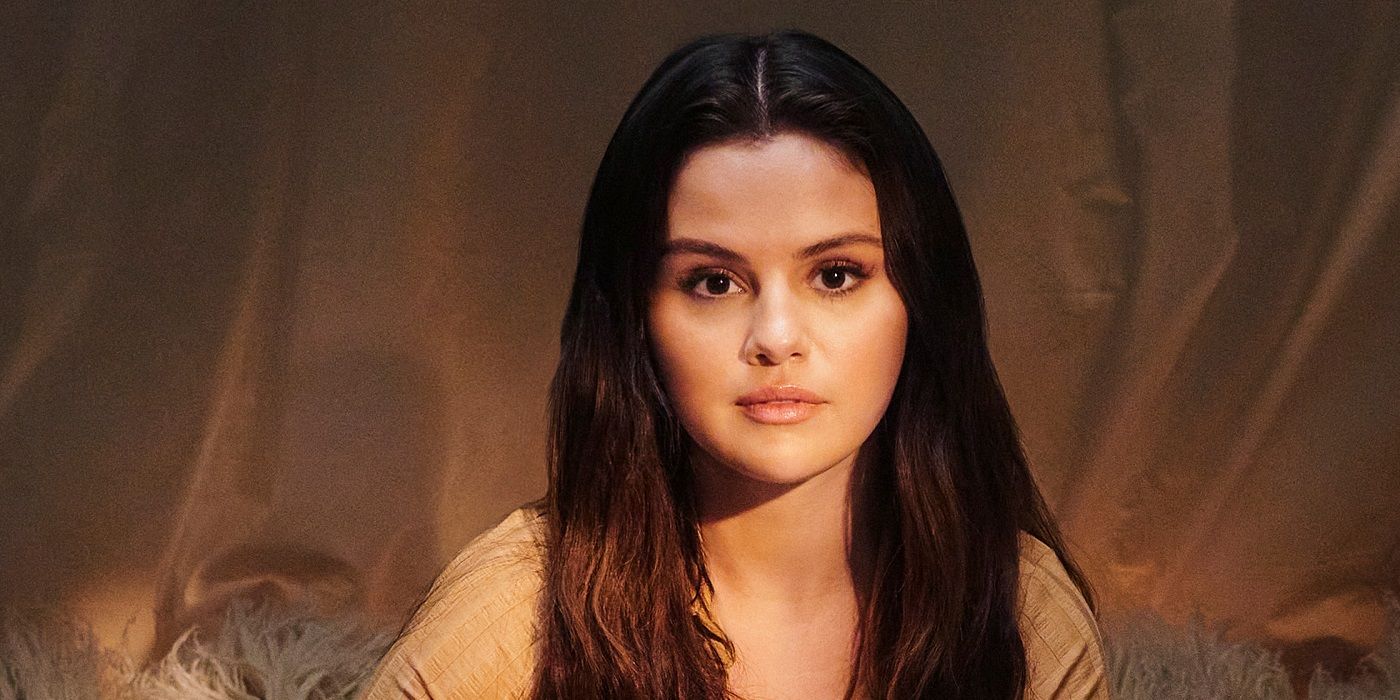There’s a scene towards the end of Selena Gomez's new documentary Selena Gomez: My Mind & Me where the pop star asks “What am I doing?” with genuine bewilderment and is instantly told all the things she needs to do for the day. Only, Selena has muttered this in her sleep and has no idea what’s happening when she comes out of her haze. That scene alone underlines the purpose of Alek Keshishian's AppleTV+ documentary Selena Gomez: My Mind & Me, a lean 90-minute feature that feels less like your typical pop star PR vehicle and more like an honest look at the grueling life of a pop stardom.
Following the success of other musician-focused documentaries like those about Lady Gaga, Taylor Swift, and Billie Eilish, My Mind & Me might feel like yet another addition to a slate of formulaic star-broadening vehicles. But it is important to note that director Keshishian practically pioneered the genre itself when he directed the famed Madonna documentary Madonna: Truth and Dare in 1991. So it is unsurprising that it becomes apparent in the first ten minutes of My Mind & Me just how no-holds-barred this documentary's approach will be.
'Selena Gomez: My Mind & Me' Is Ruthlessly Honest
From the very beginning of this documentary, we are shown just how ruthlessly honest the project's storytelling will be. Selena Gomez tears herself down, criticizing everything about herself from her looks to her performance and her social standing. The somber scene sets the tone for the rest of the raw documentary, which details Gomez’s difficulties with mental health such as her battle against depression and bipolar disorder. Further complicating things is her lupus which flares up in 2020 and is painfully captured on screen, demonstrating how tough living with that autoimmune disease can be.
How Is 'Selena Gomez: My Mind & Me' Different From Other Musician Documentaries?
What sets the documentary apart is just how frank the film is about the world Selena Gomez inhabits and her own duality. We see moments of Gomez tearing every facet of herself down juxtaposed with her going up on stage to perform her self-love anthem "Who Says." We see Gomez being both reluctant to take her meds, and then subsequently arguing with her friend when her friend suggests that Selena's not doing as much as she should. Time and time again we see Gomez being remorseful about some of her actions and wanting to do better. All of this makes for a richly layered documentary where we (whilst constantly being sympathetic) come to understand Gomez in a more raw and honest way. The documentary successfully fleshes out a dynamic, multi-layered look at Selena Gomez's narrative and by the end of the movie it’s easy to walk out with both understanding and admiration.
'Selena Gomez: My Mind & Me' Is Not Pop Star PR
Selena Gomez: My Mind & Me feels less like pop star PR and more like someone's account of their battle with life-threatening mental and physical illnesses – and for that it is all the more rewarding. As the film edifies, Gomez’s incredibly tough experiences make the shallowness of pop stardom and all that comes with it all the more glaring. While documentaries like Miss Americana have explored the pressures of the media on celebrities, My Mind & Me goes one step further, exposing the misogynistic bent of the questioning hurled at stars as well as the surface-level absurdity of the media circus. Throughout the documentary we see Gomez longing for real connections. She wants to talk about important things that matter and, as she rightly points out after a particularly ludicrous interview, anything other than that is all a waste of time.
Partly because the documentary is so sharply focused on Selena Gomez's mental health struggles, there isn’t much time spent on her relationship with pop star Justin Bieber. The aftermath of their failed relationship, though, is on display. As her friend Raquelle Stevens accounts, Gomez goes through a psychotic break for which she was placed in a treatment facility. Her bipolar disorder is undiagnosed until this happens. She is put on a host of medications that wreak havoc on her body and leave her as a shell of a person. Despite this previous romantic relationship not being a focal point of the film, there is a sense of that it haunts Selena. Particularly in how we get to see the creation of her Billboard Number 1 hit "Lose You To Love Me." Another lingering, yet not directly talked about aspect of her time is her tenure as a Disney starlet. Selena Gomez rose to fame on the Disney Channel hit Wizards of Waverly Place comedy series and went on to produce music for the mouse house. Yet, there’s clearly a lot of baggage that came with that experience and, as Gomez opines after a French interview where she feels unheard and dismissed, she feels like “a product” – something that triggers her because of her time working as a child star for Disney.
In stories where one is trying to capture the good in things, there is often a challenge of creating something that feels too cheesy. We have become so used to insincerity and duplicity from all the public figures we know that showing that someone is actually trying to do some positive things in the world is a hard pill to swallow. So all of Gomez’s philanthropic efforts and her life-changing visit to Kenya in lesser hands could have come across as disingenuous and solely put in the documentary to paint her as a saint. Yet, Keshishian masterfully interweaves Gomez’s personal arc and makes a case for human empathy. Why wouldn’t Gomez be moved by stories of suicide ideation and the idea of there being more to life than fluff when Gomez herself has walked through those exact things? Despite her platform, the director distills Gomez’s struggles with a need for human connection and a yearning to do something that actually matters – something that a lot of us can relate to.
Fittingly, there’s no triumphant conclusion to this story. Gomez doesn’t close the doc with an olive wreath around her head, having learned all that there is to know about life. Instead, the documentary makes it clear how Gomez hasn’t completely overcome her mental health struggles, but has found a purpose. By the end, Gomez knows what she is doing here, both as a pop starlet and, more importantly, as a philanthropist.


